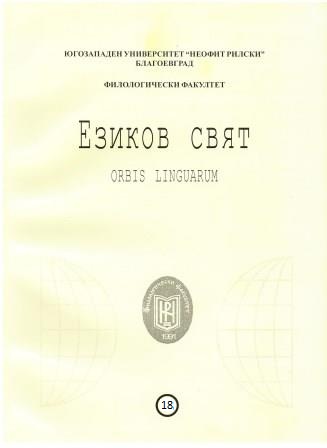OLD ENGLISH DERIVED ORDERS AT THE SYNTAX-INFORMATION STRUCTURE INTERFACE
OLD ENGLISH DERIVED ORDERS AT THE SYNTAX-INFORMATION STRUCTURE INTERFACE
Author(s): Yana ChankovaSubject(s): Language and Literature Studies, Theoretical Linguistics, Syntax
Published by: ЮГОЗАПАДЕН УНИВЕРСИТЕТ »НЕОФИТ РИЛСКИ«
Keywords: Scrambling; optional movement; Old English; double object constructions; internal adjunction; information packaging; Syntax-Information Structure Interface
Summary/Abstract: The present paper reports some findings from the author’s research on a particular non-canonical order, derived by Scrambling and attested with double object constructions with one non-finite verb in The York-Toronto-Helsinki Parsed Corpus of Old English Prose (2003). The account of Scrambling is launched in a Minimalist syntactic framework but invokes information structural and semantic factors in an attempt to assess the extent to which the general linearization principles can be affected by such factors. The paper provides convergent support to the claim that Scrambling is an optional displacement operation raising internal Arguments and Adjuncts out of their source positions into phrasally-adjoined targets in the left periphery of vP. Assuming that Scrambling has an effect on the way constituent order correlates with discourse roles, the following paper argues that Scrambling in Old English occurs on the Syntax-Information Structure Interface, and, by corollary that it can be thought of as a type of information packaging syntactic device. Though syntactically optional, the studied Syntax-Information Structure interactions are semantically effective, i.e. they have a bearing on semantic interpretation and can best be described as interface interactions, whereby the scrambled modified orders are licensed based on their syntactic, information structural and semantic properties
Journal: Езиков свят - Orbis Linguarum
- Issue Year: 18/2020
- Issue No: 3
- Page Range: 023-030
- Page Count: 8
- Language: English

